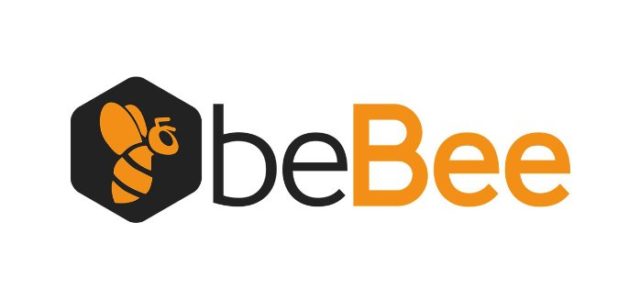Certain types of service organizations navigate a sale that is complex, long, risky and challenging. If they win the deal, everyone rejoices and rain falls from the sky. If they lose the deal, well let’s just say that makes for a very bad day, potentially a very bad year. The complex sale is tough. I have known of certain complex sales to last for a year or more. Early in my career, I was involved in a 20-million-dollar deal that took nine months to win. I have seen these types of deals create chaos, stress and anxiety. I’ve seen the complex sale make or break careers. Without a doubt, the complex sale is risky.
After nearly 25 years of helping service organizations navigate the complex sale, I’ve learned a lot of lessons. I believe you can substantially improve your win-rates by following a proven methodology and a seven-step process. In fact, I think you can get to a 100% win-rate. Let me show you how to do this.
WHO NAVIGATES THE COMPLEX SALE
Through the course of these seven thought pieces on selling professional services, I have consistently made a distinction between those who sell services to businesses (B2B) versus those who sell services to high-end consumers (B2HEC). I believe that is an important distinction because I don’t want to waste your time.
So let me begin with a caveat. If you sell services to individuals, this thought piece may not be for you. The vast majority of complex sales that I’ve seen are for businesses. By industry, these service organizations are often in:
- Management consulting
- Technology consulting
- Coaching
- Accounting
- Architecture, engineering and construction
- Corporate law
- Software-as-a-service
While not every sale for firms in these industries will rise to the level of the complex sale, the really big deals that make big rain are definitely complex.
KEY TAKE-AWAY: A 100K AND 1M DEAL REQUIRE ABOUT THE SAME TIME AND EFFORT – SO WHY NOT FOCUS ON THE 1M DEAL?
CHARACTERISTICS OF THE COMPLEX SALE
Let me briefly describe the characteristics of the complex sale so we’re all on the same page. The complex sale is marked by:
- Substantial dollar amounts on the line – usually $250,000 and up
- Multiple decision-makers and influencers – who often hold conflicting visions for what a successful outcome looks like to them
- Multi-phased sales campaigns – where you may need multiple meetings to address each phase of the future engagement
- Multiple approaches outlined by competitors – where each one puts forward a somewhat different solution for achieving the goal
- Big risk for everyone – especially for the decision-maker whose career may be on the line
- A major turning point for the buyer – once they adopt the solution, there will be change required on their part and this could include cultural change, which is never easy
These are the characteristics of the complex sale. Given all that is required and how challenging these deals can be, you might be wondering why you should even attempt them.
WHY YOU SHOULD TACKLE THE COMPLEX SALE
I believe there are two very good reasons to tackle the complex sale. First, the complex sale allows you to move up-market and take on bigger deals that produce more revenue and profits. I’ve spoken to dozens of mid-size service firm leaders about this topic. I consistently hear this statement. I’m wondering how this compares to your experience.
If you look at how much effort and time is required to close a 100k deal versus a 1-million-dollar deal, it’s probably about the same. So why would you focus sales efforts on 100k when those same efforts could produce 1 million? That is a very good question indeed.
Second, the complex sale can provide good long-term stability and revenue. Many of the complex sales that I have helped my clients win are for managed services. Managed service offerings are often based on month-to-month or quarterly payment options that provide very good predictable revenue for you.
GENESIS OF THE DEAL
Before I go on to describe the seven-step approach to winning the complex sale, I want to talk for just a minute about where a deal comes from. This can have a huge bearing on how you handle them and whether or not you even engage them. The genesis of complex sales that I see today include:
- Referrals
- Business development prospecting
- Social selling
- Existing relationships
- Marketing generated
- Events
- RFP’s
Referrals are a bit of a good-news bad-news scenario. The good news is that referrals usually come from people who know and trust you and who are trying to help someone they care about. The bad news is that the prospect may or may not be a good fit for your firm. In my experience, referrals only work out about 50% of the time for complex sales.
Business development prospecting is one of the very best sources for complex sales. A business development person usually has a very good understanding of their ideal client. Many business development people today are also using social selling to prospect. This relatively new approach is one of the best sources I see today for entering the complex sale.
Existing relationships are a great source for the complex sale. Most of the successful business development people I know have very strong personal credibility. Their history of integrity will often cause a prospect to reach out to them to discuss a potential deal.
Marketing generated leads are a mixed bag. In some instances, they can be a waste of time, especially if the lead is simply thrown over the wall from the marketing function. However, if a prospect was nurtured through a sales funnel with insightful content and if their behavior score from a marketing automation platform indicates real interest, these can be outstanding leads – some of the very best.
Events, such as conferences, tradeshows and seminars, can be very good sources for complex sales. Many of our clients use these events to network and prospect with potential clients. However, events can be expensive and most people who attend are simply looking for information and are probably not ready to move ahead on a deal.
RFP’s are usually the least likely source to produce a win. Our clients are nearly evenly split on RFP’s: half respond while the other half ignore them. The problem with RFP’s is that they require you to play by someone else’s rules.
I’ve seen certain RFP’s that are so structured that there is simply no way to provide meaningful insight to the buyer or even to push-back against concepts that are outright wrong. But you usually never know how coachable an organization is until you enter dialogue with them.
So my counsel to you is to assess an RFP based on how it is structured. If it’s too narrow, it might be a waste of time. It can be worthwhile to reach out to the architects of the RFP to see if they are open to coaching. If they are not, then you know the rules of the game and you have a business decision to make.
ELIMINATING THE OPTIMIST’S BIAS
Sales and business development people are often optimists. They see the glass as half full most of the time. A positive mind-set is absolutely necessary for a career that can be marked by rejection. You need resilience. However, when it comes to the complex sale, a predisposition to be optimistic can be a very dangerous thing. It can delude you to keep going when you should stop.
One of the worst mistakes you can make is to assume that have to keep going because you need to win the deal. This mind-set communicates desperation and smart service buyers can sense that and take advantage of it. Your mind-set should be – we will keep going if it makes sense but if it doesn’t make sense, we’re out. This attitude helps you remain balanced and in control.
There is a judgement call you’ll need to make at every stage of the complex sale. Should we keep going or should we exit? My counsel to you is that at the conclusion of every stage, you should make the go or no-go decision with your team. Get as many perspectives as possible so you make the right call. Remember this key principle: the longer you are engaged in dialogue, the harder it is to walk away.
I also recommend that you re-assess the five characteristics of sales-ready service buyers at each stage of the complex sale: need, budget, reason, timeline, dialogue. You shouldn’t be surprised if these evolve as the deal progresses. Don’t simply look for reasons to keep going. Be honest with yourself and your team about the likelihood of a close – based on hard facts, not assumptions.
I have participated in several post-mortems on lost deals. Usually, the tell-tale signs of a lost deal were evident in the early stages of dialogue. But an optimist’s bias caused people to keep going when they should have either pushed back on the prospect to turn dialogue in their favor or simply walked away.
The key to a 100% win-rate is knowing when to keep going versus when to walk away. The old saying is don’t count your chickens before they are hatched. This is good advice. Keep an even keel and a willingness to walk away at every stage and you’ll increase your odds of winning.
KEY TAKE-AWAY: THE KEY TO A 100% WIN-RATE IS KNOWING WHEN TO KEEP GOING VERSUS WHEN TO WALK AWAY.
THE SEVEN-STAGE APPROACH TO WINNING THE COMPLEX SALE
If you want to consistently win the complex sale, I recommend that you use this seven-stage methodology:
- Identification
- Research
- Clarification call
- Discovery
- Pre-proposal
- Prospect assent
- Agreement
Let’s explore each of these steps in greater detail.
IDENTIFICATION
In this stage, a prospect becomes visible to you. Either the prospect reaches out to you and requests dialogue or you reach out to them and they agree to enter dialogue. Here is what’s important about the identification stage.
You want to assess how the prospect came to be in dialogue so you can gauge your time investment accordingly. The big risk to business development people is that you’ll waste your time on deals that won’t close.
I recommend that you use the criteria I outlined about the genesis of deals and then compare those criteria to the last ten or so deals that you have won. This should give you a barometer for knowing which deal sources are the most likely to close. This protects your time and energy and helps you focus on the winners while avoiding the time-wasters.
RESEARCH
In this stage, you prepare for early dialogue by conducting your own research. In my opinion, it is best if you can do this research before the clarification call. The more you know about the prospect before you enter dialogue, the more likely you are to make an accurate go or no-go decision right after the clarification call.
So here are the kinds of research that I recommend. If your organization has a marketing automation system and a CRM and if the prospect has become visible to the system, you have a huge advantage. You can see the prospect’s behavior score and what they’ve been thinking about. This gives you a window into their mindset and helps you prepare to talk about what matters to them.
This is especially effective if you have a robust content marketing program. The prospect’s digital behavior can guide your dialogue during the clarification call to give you and the prospect the best return-on-time.
I also recommend that you visit the prospect’s website, LinkedIn profile, LinkedIn company profile and even do a Google search on them and their company. Your research should help you uncover:
- If the prospect is a decision-maker or decision-influencer
- Who else might be on the decision committee
- The presenting issue that might be causing the prospect to request dialogue
- The fit to the demographics of your ideal client profile
The more you know about the prospect before the clarification call, the better that call will go and the more effectively you’ll be able to make the go or no-go decision right after the call.
CLARIFICATION CALL
In this stage, you enter dialogue, usually in the form of a first call. I prefer to have these calls over the phone and in about 30-45 minutes. Some people prefer to have this call in-person. No matter how you choose to handle the call, here is what this call should accomplish:
- Ask questions that allow you to assess the five sales-ready characteristics
- Assess the fit to the goals, opportunities and challenges outlined in your ideal client profile
- Discover who’s on the decision committee and what they’re roles look like
- Get the money question off the table
- Document specific next steps and outline what your discovery process looks like so the prospect knows what to expect
I like to start these calls with a general question. “What can I do for you” or “how can I help you?” This allows the prospect to jump right in and tell me what’s on their mind. All the while, I’m listening for the indicators that their goals match up to what our ideal clients want to achieve. I’m assessing the fit and I recommend that you do the same.
To get the money question off the table, I recommend two approaches. First, you can describe a prior engagement that is similar to what you think this prospect will need. You can relate the deliverables and fee structure from that engagement and ask the prospect if this is within reason for them.
Second, you can describe the low-end and high-end of the fee structure that is common to the types of engagements that you think the prospect needs. Either approach can give the prospect a sense of how much you might charge. If they push back on fees, you know you have a price-sensitive buyer and you’ll have to proceed accordingly.
If they tell you that your fees are completely out of bounds, you have no reasonable basis for proceeding in dialogue with this prospect. Business development people who don’t get the money question off the table within the very early stages of dialogue set themselves up for frustration, time wasting and a poor outcome. Don’t make this mistake.
DISCOVERY
Discovery is the most important stage of the complex sale. Good discovery empowers you to create a great proposal that puts you in the best position to win. Discovery is ultimately about uncovering the win-results and lose-results of the people on the decision committee. Discovery is also about becoming a trusted advisor. So I have a few recommendations for you.
Use a custom discovery interview guide. If appropriate, ask different questions to committee members based on their roles and what matters to them. Interview everyone on the decision-committee and keep it tight. Send questions in advance of the interview and use a calendaring tool to send invitations. I complete most discovery interviews in around 30 minutes.
Discover any power brokers who are not on the committee but who should be interviewed.
Listen and document everything you hear. Provide a summary document to the prospect after completing interviews and ask them to confirm that what you heard is what they meant to say.
From this process, you should be able to identify a champion, someone who has the most to gain and who can influence the decision committee to move forward. You should also be able to clarify roles on the decision-committee.
Another very important part of discovery is beginning to push back on approaches and ideas that you know will not work. In most complex sales I’ve been involved in, prospects know the outcomes they want to realize. But they have all sorts of ideas about how to achieve those outcomes, many of which are simply ineffective.
It’s your job, as the consultant, to begin to guide the prospect toward the most effective approach to achieving their goals. Your experiences, case studies, client stories and insights should help the prospect discover the best approach. This is where you start to gain trust and serve as a steward of their resources. Gaining this trust is crucial for the relationship after you win the deal.
Here is another guiding principle: if the prospect does not give your counsel credence through the discovery process – if they do not start to listen to you – you have no reasonable basis for believing they will listen to you after the deal is signed.
Your discovery summary document should describe the top 5 or so outcomes that your engagement should produce. You’ll want to focus your proposal around these outcomes. But along the way, you should also assess the cultural fit and the coachability of executives. For my firm, this is one of the most important factors in our go or no-go decision.
PRE-PROPOSAL
Some firms create a formal proposal right after discovery. I think that’s a mistake. I prefer to send an email that describes the engagement I’m proposing. I find this pre-proposal process to be the best approach. Here are reasons for doing this.
If you send a formal proposal and it includes a signature line for the decision-maker, suddenly the decision becomes very real for the prospect. It feels formal and potentially rigid. I’ve seen this create undue anxiety for prospects who need time to discuss the approach you recommend. They might need to digest, as a team, the implications of your approach and potentially the changes that are required on their part.
This can feel overwhelming for people who are about to spend a lot of money and make a decision from which there is no turning back. It also can feel like they’ve been boxed out of dialogue on key points where they might want input.
A pre-proposal email runs none of these risks. It allows prospects to view your approach and fee structure without feeling obligated to sign anything. They can then respond to your ideas and ask for revisions or clarification.
About 50% of the time, when I’ve used a pre-proposal, a prospect simply replies with “this looks great – exactly what we’ve talked about.” Yet, the other 50% of the time, prospects request clarification or even modifications to what I’ve presented.
I know this additional pre-proposal step has helped win a lot of deals. It shows good will on your part and a willingness to listen and be a team player. It shows sensitivity to the weight of the decision the prospect will make. It increases trust and likeability.
A pre-proposal email should include a few key things:
- A statement of the major goals and outcomes your engagement is designed to produce
- An overview of your approach
- Timelines and milestones
- A clear statement of your deliverables
- A breakdown of your responsibilities and the prospect’s responsibilities
- Your fee structure
Terms and conditions are also an important part of the final proposal that a client will sign. If you have standard terms and conditions, I recommend that you send them with the pre-proposal email.
The goal of the pre-proposal email is to create rock-solid clarity between you, your firm and the prospect about what everyone will agree to. The pre-proposal email can also create excitement for the champion who will urge decision committee members to get on with it.
PROSPECT ASSENT
Shortly after sending the pre-proposal email, you should get prospect assent. I look for this both verbally and via an email response. If all goes well with your pre-proposal, the prospect will green-light the agreement right away. But if you need clarification and revisions, this is the time to hammer them out.
Once you have the deal scoped out and the terms and conditions agreed to, I recommend that you ask this question either in person or over the phone. “If I send you a proposal that outlines everything we’ve talked about so far and for the fee structure I’ve described, will you sign it?”
It’s important to ask this question to the ultimate decision-maker. If they do not say yes, you have work to do. You need to ask – what did I miss? This should allow you to go back and uncover and address whatever is blocking the prospect from moving ahead. A thorough discovery process and the pre-proposal should greatly reduce the likelihood that this will happen.
AGREEMENT
Once the final decision-maker says yes to the pre-proposal, I recommend that you get the formal agreement in front of them within 24 hours or fewer. This probably means you will need to have worked with your compliance or legal teams to review the terms of the deal before you have verbal approval from the prospect.
This seven-step approach is the most effective I’ve ever seen for winning the complex sale. I have used this approach for nearly 20 years and it has not failed me. I know that if you follow what I’ve outlined here, your win-rates will sky-rocket, possibly even to 100%.
Article by channel:
Everything you need to know about Digital Transformation
The best articles, news and events direct to your inbox
Read more articles tagged: Digital Marketing, Featured







